Tosh Berman's Blog, page 176
September 30, 2016
"THE EYE OF THE SIXTIES: Richard Bellamy and the Transformation of Modern Art" by Judith E. Stein
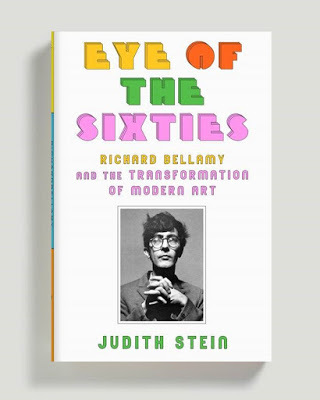 978-0-374-15132-4
978-0-374-15132-4"Eye of the Sixties: Richard Bellamy and the Transformation of Modern Art" by Judith E. Stein (FSG)
Superb biography on a New York City art dealer and visionary Richard Bellamy. There are people I should know about, and for some odd reason, and compared to the other huge dealers at the time, I never heard of Bellamy. Which is to be frank, quite idiotic of me. He brought the world, or to be more specific Manhattan, the world of Claes Oldenburg, Donald Judd, Dan Flavin, James Rosenquist and many others. The beauty of Bellamy is that he was mostly fascinated with art and the artists - and could care less about the financial aspect of that world, or what it could bring to someone's pocket or piggy bank. His devotion (as a dealer) and friendship with Mark di Suvreo as well as Alfred Leslie is a classic relationship between dealer and artist. It seems he had an eye on the bigger picture, and author Judith E. Stein captures that essence of Bellamy. Throughout the narrative we get Warhol, Yoko Ono, Yayoi Kusama, Jasper Johns, and others. If Bellamy didn't take on these artists for his "Green" gallery, he worked hard on their behalf to find them representation.
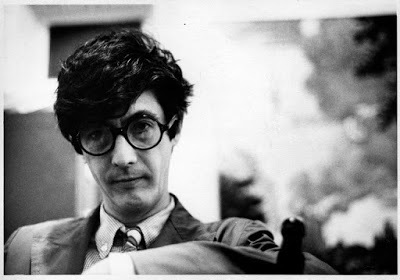
And of course, the other reason why I like this book is the character of Bellamy. Usually drunk, often depressed, hysterical, insane dresser, and quite eccentric behavior. His relationship with Robert (and kind of Ethel) Scull, the major collectors of art in Manhattan, is equally fascinating. Robert was the secret backer to Bellamy's Green gallery, and it's interesting in the up's and down's of that gallery and Bellamy's mental state - they remained friends. It seems Bellamy didn't base his personal relationships on money alone - and this is what gives his character a great heart. Also, he was a very handsome man, who in photos reminds me of Jarvis Cocker a bit. Tall, nice hair, half-Chinese, and great taste in glass frames - he must have been a striking figure when he walked in a room. This was such an enjoyable read. It's nice to spend time with a fascinating character in a very active era of the visual arts in New York City.
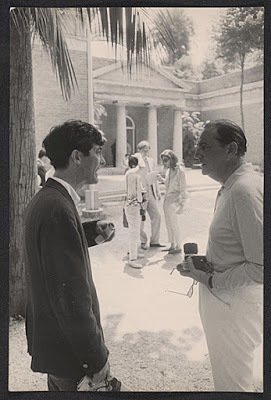 Richard Bellamy & Robert Scull
Richard Bellamy & Robert Scull
Published on September 30, 2016 10:33
September 28, 2016
Karlheinz Stockhausen -- Mikrophonie I / Mikrophonie II
Lately, I have been listening to a lot of classical/electronic/musique concrete music from the 1950s & 1960s. It puts me in a good headspace, with respect how the world is behaving these days. Stockhausen is a composer that I know very little of his music, but his name of course. For the next year or so, I plan to go into the rabbit hole that is Stockhausen's world.
Published on September 28, 2016 09:38
September 23, 2016
John Cage - Water Walk
John Cage's performance on "I've Got A Secret TV show in January 1960.
Published on September 23, 2016 09:47
September 17, 2016
"The Witkiewicz Reader" by Stanisław Ignacy Witkiewicz (Edited, Translated, and with an introduction by Daniel Gerould
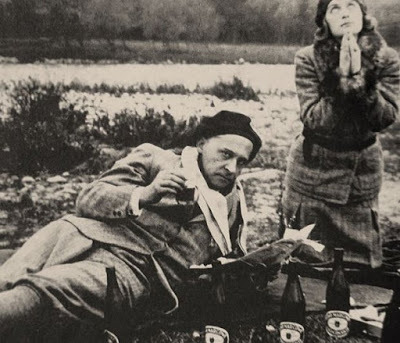
"The Witkiewicz Reader" Edited by Daniel Gerould (Northwestern University Press)There is the joy of going to a used bookstore, for instance, Alias East, on Glendale Blvd. and picking up a totally unknown author and his book. Stanisław Ignacy Witkiewiez, or better known in his home country of Poland, as Witkacy. "The Witkiewicz Reader" is an anthology of his various writings from 1914 to the date of his death (by suicide) in 1939. He lived through tough times in his country or part of that world, and his writings reflect, not realistically, but at least spiritually or aesthetically, the period that he lived in. Which, looking back, was not so good.
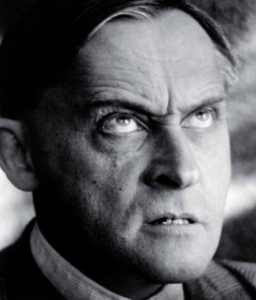
He was not only a writer, but also painter, commercial portrait painter, philosopher, playwright, photographer and a huge experimenter in narcotics. In that sense of structure he sort of resembles Artaud, but without the madness, but clearly with the emotional attachment to his life and the things that went wrong in that life as well. Personally I don't find his fiction that interesting, but on the other hand, his essay on drugs is very interesting, as well as his letters to a friend. He is probably one of the first 'aesthetic' writer to focus on the effects of peyote and cocaine. Almost scientifically minded, but.... well, he's an artist, so that aspect totally rears its head in. In that specific sense, he resembles William S. Burroughs - in fact, if he lived just a tad longer, I think he would be a Beat.
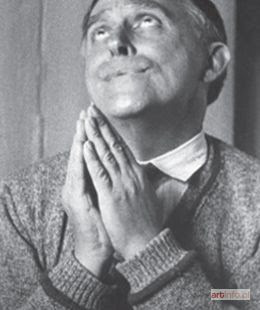
Reading a best of, which is basically selections of that author's writings, one gets a pretty good snapshot of one's work. I'm curious to actually read an entire novel by him. If that's possible, and in English. Daniel Gerald, did a good job in choosing the material and he also places his life in chronicle time - so it's very much of a biography as well.
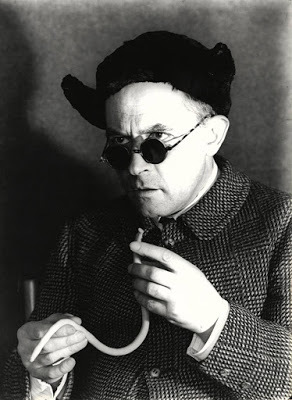
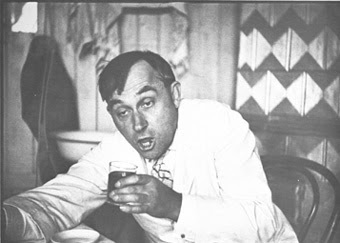
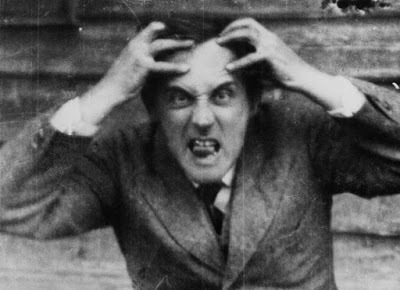
Published on September 17, 2016 15:02
September 16, 2016
Eve Babitz
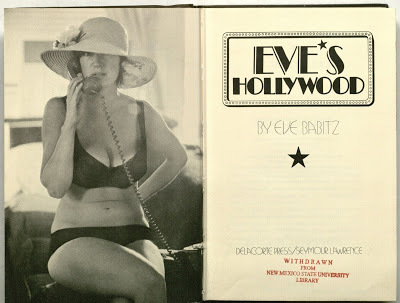
There’s Adam, and then, there is of course, Eve Babitz. There are those who call her a party girl, but in truth, she had documented her times and social world in Southern California, as if she was Charles Dickens. Or perhaps Marcel Proust. Her landscape is the Los Angeles art world of the 1960s and 1970s. I first met her when I was a child, and I think it may have been at Barney’s Beanery in West Hollywood. My father, the artist Wallace Berman, would go to Barney’s for a glass of beer or two, and so would the entire population of the L.A. artists of that time and period. Eve was attached to various artists, so therefore she was a regular as well. My initial reaction to her as a child was 'pretty lady. ' To the outside world, she was introduced as the naked girl who played chess with Marcel Duchamp, in the now a famous photograph by Julian Wasser. Babitz also did colleges, and she did the artwork cover for the second Buffalo Springfield album. She was famous for dating interesting men. But now, as people look back and noticing or reading the new reissues of her books (published by NYRB and Simon & Schuster) - Eve Babitz is a writer of great distinction and importance.
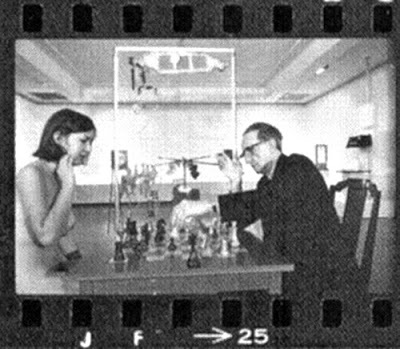
One thing I have noticed, that people from my age and time, if they’re still alive, the younger generation is very much interested in those who lived the life during the 1960s. If for nothing else, just because one has had breathed with the greats, or acknowledge to share the same glow as those who are now deceased. The subject matter of culture in Los Angeles is very much a huge interest among those who study cultural history. It’s an area of the world where every great person of some note, has visited or lived under the sunny skies. Movies and music have been produced, written and made here, and so the same for its literature. A lot of Los Angeles fiction or literature comes from writers who came from somewhere else, and are trying to deal with the physical aspect of living someplace that they perceived as hostile to their physical and mental well being. Eve Babitz is not in that category at all, because she’s very much the daughter of Los Angeles, and was raised in a highly cultured household. Her mother was an artist, and dad a classical violinist, who worked for the 20th Century Fox studios. Her godfather is Igor Stravinsky. Eve’s life is a mixture of the high and low culture that was Hollywood from the 1940s to 1960s. The city is a magnet for the displaced, the adventuresome, and the romantic as they shadow-punch the shadows away from the direct sunlight. In such a fashion, Babitz is the skilled guide to the landscape and citizens of Southern California. She resembles both Marcel Proust and F.S. Fitzgerald, because she has a great eye for detail, and clearly has an understanding regarding the importance of the landscape within the characters’ make-up as well as their presence in that world.
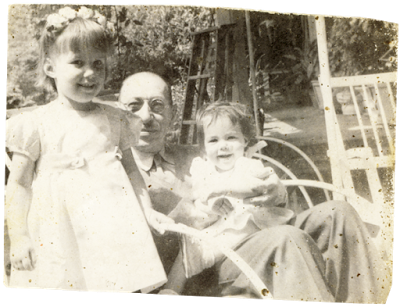
Also, she has the magnificent talent of being in the right place and time. The famous image taken by Julian Wasser of Eve, in the nude, playing chess with Marcel Duchamp was a matter of luck and by the hustle of the photographer, knowing to get a great shot. The background story was that Babitz was having an affair with Walter Hopps, the curator of the Duchamp exhibition - and at the time, there was some discomfort between the both of them. In a sense, it was Babitz’s revenge towards Walter for not allowing her to come to the Duchamp opening. Ironically enough, as it is a playful homage to Duchamp’s “Nude Descending a Staircase” it is also a secretive (which Duchamp would approve of) commentary on Eve’s part as well. Although the whole image was dreamed up by Wasser, I suspect Babitz saw the many levels of such a setting.
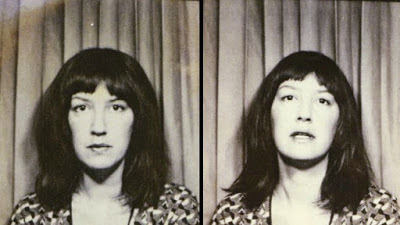
I just finished reading “Slow Days, Fast Company: The World, The Flesh, and L.A.” and it’s an incredible snapshot of not only Los Angeles proper, but also the getaway locations such as Palm Springs, Bakersfield, and various beach communities. I have also read “Eve’s Hollywood,” but I prefer “Slow Days” because i feel in this book Babitz really conveys her love for Los Angeles, not only for its obvious reasons of sun, beach and fun - but also for its darkness and great culture. Babitz is very opinionated and focused on the weaknesses of the various characters that run through her narratives. That is what gives her writing the noir quality. It’s not about crime and guns, but more regarding sexuality and how one looks at life. She is thought of as a party girl, yet she strikes me as a realist, and how everyone plays out their fate in the community. Also her commentary that she makes in the book regarding the nature of doing creative work in Los Angeles is 100% correct. To quote, regarding Stravinsky in L.A.: “I think that the truth was that Stravinsky lived in L.A. because when you’re in your studio, you don’t have to be a finished product all the time or make formal pronouncements. Work and love - the two best things - flourish in the studios. It’s when you have to go outside and define everything that they often disappear. “ In her eyes, New York and elsewhere is where the final product is defined and noted for its importance. Yet, doing art in Los Angeles is very much part of life, and it is not about defining who you are, but the enjoyment of being in a studio or being studio-minded and processing all of that in your artwork, music or film. An interesting and wise observation from Babitz. She's an excellent writer.
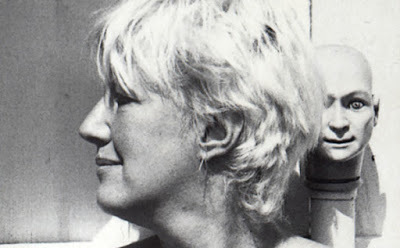
Published on September 16, 2016 15:54
September 15, 2016
Gruppo Nuova Consonanza Azioni Documentario
Mario Bertoncini, Walter Branchi, Franco Evangelisti, John Heineman, Roland Kayn, Ennio Morricone, Ivan Vandor e Frederic Rzewski.
1967-1969
The greatest Italian band ever! Maestro Ennio Morricone and his fellow band members playing live in this documentary. Must watch!
Published on September 15, 2016 11:17
Vince Taylor - Rock'n'Roll singer - 50s/60s
A superb mini-documentary on the great Vince Taylor. I have been obsessed with Vince for some time now. Without a doubt, he's rock.
Published on September 15, 2016 08:01
September 13, 2016
The Evening Series No. 4

The Evening Series Volume 4
Tonight, I feel like someone turned the oxygen off. Stuffiness has its decaying scent. Not mildew exactly, but the scent of life not happening. Which pretty much describes my life. The job I have already, pretty much pays the bills, but nothing left over for fun and relaxation. So in place of relaxation and fun, I began to work on a journal. At first, I decided to get a blank notebook - but one with attractive grade of paper, but also much needed lines. My handwriting is kind of bad, so I need something to keep my lettering straight and to the point. And since I don’t have a lot of money, I purchased an expensive blank (but lined) journal. In my mind, since I made a financial commitment on the tools of the trade (expensive pen as well) then that means I will produce great literature. So far, the page has been blank.
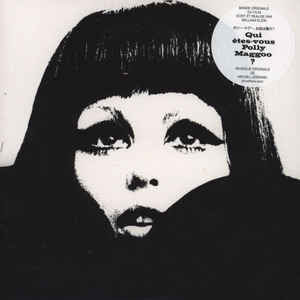
If time is money, I’ll be super broke by now. I have noticed that I look at the clock on the wall, more than the empty blank page in front of me. At times, I feel like a narration that is just waiting to be cracked open. Then again, I do look at that clock often. The big hand moves faster than the little hand. And my hand grasps the pen and it’s not moving at all. I put on Michel Legrand’s “Ballade de Polly Maggoo” on the turntable, because it’s getting closer to midnight, and I haven’t the foggiest idea why I have the notebook opened in front of me. It’s not drawing me closer to the pen or paper. If I stare at the two items on my table, it looks like they are pulling away from me.
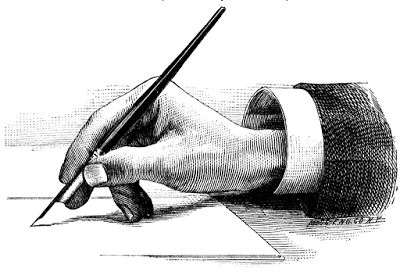
My memory is very great, and part of the problem is I can’t feel or tell which memory is more important than the other. I start thinking maybe I should write something about my life, but then again, don’t you need to have a life to write about it? Clearly I did things, but living that life is one thing, and then writing it down is a totally different matter. I’m pretty sure I was happy when I went through the motions of my life, but writing, I feel a sense of disappointment, that perhaps, I could have done more. And we are taught early that more is the best. But looking back, it seems not that much has happened.
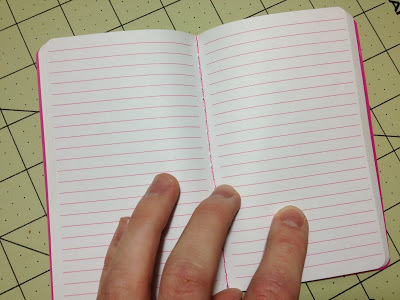
The notebook’s blankness is now taunting me. I used to own a series of leather bound miniature notebooks to take with me so I can jot down an idea or image if I’m out of the house. But, not surprisingly, the blank notebook pretty much stayed in my back pocket of my jeans, and often while walking in Echo Park Lake, I would pretend to write something down on the blank page, because I would see people all around me, writing with great intensity. The only thought in my head at that moment, is that I wish that I had some sort of passion - something to burn me up. Depression, pure joy, even a boredom with many textures and levels - but all I felt was nothing. So pretending just made me feel ‘OK’ at that moment, and occasionally I would stroke my chin, like I’m in deep thought. But the truth is, I was totally acting. I’m such a fake, and then I try to analyze that, so I can write on that subject - but all I come up with is a blank. Void. Empty. Natta.
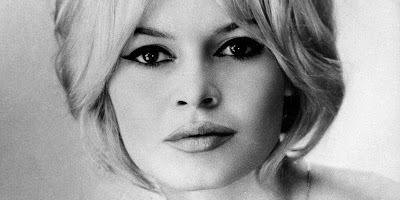
It is at that moment, that I put the notebook aside, and open my laptop. I go on Facebook, to see what Kim is doing. She writes on film, especially Noir, and is very much an expert on the cinematic arts. She also can’t sleep at night, and tend to post on Facebook around 2 am, and since it is the twitching hour, I want to see what she’s up to. Gene Wilder. She’s posting images of Gene Wilder. He died. She likes Gene Wilder. She likes him a lot. I never seen a Gene Wilder film. I have heard of him, and I saw images of him on the internet and in various coming attractions throughout my life, but I never actually seen a film by, or him in it. The reason why I haven’t seen his films, is because I can’t stand comedies. I can’t laugh at the movies. Why? I don’t know. I went on a date once to see a Laurel and Hardy series of short films, and my date was laughing like an insane person, but I just kept quiet and ate our pop corn. In fact, I pretty much ate the entire bag, because she was laughing, and I had nothing better to do then munch on the food, and I wasn’t even hungry.
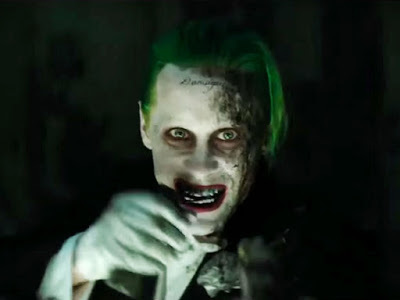
I actually wanted to go out to the movies with Kim, but I was afraid to ask her. Not in fear of not accepting my date, but her saying yes. I feel it would have been my responsibility to actually select a film, that I think she may enjoy watching. And since comedy is out of the question, what kind of film do you take a woman, or beyond that, a person to? She has a quirky taste, so I imagine it could have been the recent “Batman VS. Superman” film, or even “Suicide Squad.” But is that really a good date movie, and especially with someone like her who has sophisticated taste in films? I didn’t ask her. Or ask her out. Which solved that problem quickly.
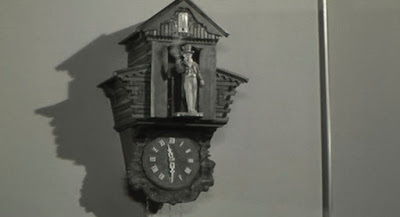
The page is still empty. Yet, somehow I feel like I lived a life. But not an actual life, but one that’s in my head. When people read my works in general, they notice that my writing is about nothing. Yet in that void, one can taste the most devious fruits, that seem to be too good. In reality, they have been rotting on my kitchen table. They are used more for visual appearance, than something tasty to eat. So, in that sense, my writing will nourish your head, but leave your body nothing. I throw the notebook aside, and I get off the chair. I approach the window looking at the night. It’s dark. My eternal canvas.
- Tosh Berman
Published on September 13, 2016 21:01
September 9, 2016
"Papa John" An Autobiography by John Phillips (Dolphin Books)
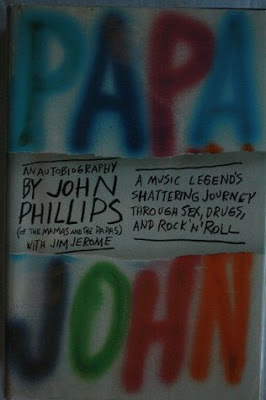
There is invariably a dark presence or cloud in one's area of interest. I love rock n' roll. In fact, I love music. And I love reading musician's memoirs. At the best, they are brilliant with strong characteristic qualities - Jah Wobble, Ray Davies, Bob Dylan, Patti Smith, Viv Albertine, Oscar Levant, and numerous jazz memoirs. The weak one's is usually written for money - well, more likely all for money, but still, the character comes through and makes it a fascinating read. Unfortunately, John Phillips of the Mamas and Papas has no strong character. Son of a failed military man, he is a figure who basically had one service - and was to service himself. There are charming characters - such as Errol Flynn and others of that particular character, that can only do bad, yet, somehow become charming even after their questionable deeds and actions. Phillips, on the other hand, lacks the charm And his memoir "Papa John" is the king of the charmless autobiographies. He had sex, he did drugs, he wrote happy/sad music, he had more sex, more drugs, hung out with famous (and more talented than him) people, did drugs with them, did drugs with his children, had sex with friends, other's wives, sex with wife, sex, and then more drugs. He became addicted. A little bit more sex, but mostly now drugs. By the time I finished this book, I loathe him. Still, at times, it was a hard book to put down. However, then again, I'm sort of the guy who can probably watch a slow-motion car accident - and then hating myself for doing so. I don't hate myself for reading this book, but as I read, I had one eye on the page of this book, and a wandering eye on the pile of books I want to be able to read. It kept my hope up.
Published on September 09, 2016 08:57
September 8, 2016
"Revolution in the Making: Abstract Sculpture by Women, 1947-2016 at Hauser Wirth & Schimmel
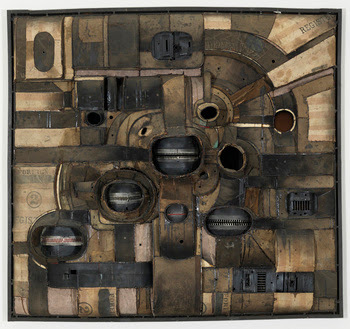 Lee Bontecou "Untitled" 1964
Lee Bontecou "Untitled" 1964I’m sad. For the past six months I have lived among the artworks of the female artists who are in the “Revolution in the Making: Abstract Sculpture by Women.” As I write this, it’s September 4th, the last day of the exhibition. Today, my wife left for Japan, my co-worker will be leaving for school sometime next week, and the show is over today. All three “closings” depress me greatly. As I walk around the gallery today, I photograph the images with my eyes, regarding the artwork here, and memory recall will be the main source for me. There is the catalog, and it’s a nice one, but it’s not the same as seeing these works in front of you. I know in the future I will be discussing this show with another person who visited the exhibition, and due to our memories, I suspect that it will be a separate experience. I have never ‘shared’ a common memory. Each person who takes in an art work, usually have their own means in obtaining that piece in their memory. For example, I have looked at Louise Bourgeois’ sculptures in the gallery across from the bookstore. I also have been looking at Ruth Asawa’s beautiful, yet fragile works of art for the past six months. When you sit by the cash register, one eye tends to wander over to the gallery with the glass doors. Since the show opened, we have been receiving up to 200 people a day. Maybe more. Although the show is focused on women’s art, I tend to forget the gender, but I have a memory of the art.
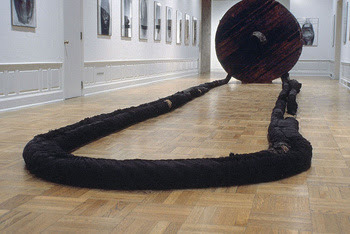 Magdalena Abakanowicz (Wheel with Rope" 1973
Magdalena Abakanowicz (Wheel with Rope" 1973Magdalena Abakanowicz’s “Wheel with Rope” (1973) is a powerful presence in a room. Technically the work spreads out to the next gallery space, with its long rope attached to the oversized wheel. For me, it reeks of the early 20th century technology or even something earlier. It’s the most aggressive work in this show. And oddly enough the work fits in with the overall architecture of the Hauser Wirth & Schimmel complex. The building used to be a food processing plant during the turn-of-the-century. So, I imagine seeing a giant wheel on the premise in 1899, was probably not that much of an unusual sight. Still, “Wheel with Rope” is a very strong piece, especially when it’s placed inside a gallery space. What I have read on Abakanowicz was that she witnessed the powers of the Stalin years in Poland, her home country. My first thought was that the wheel is used to not move itself, but there to pull something in, that would be attached to the rope. The rope is thick, perhaps to hold a large ship or boat? The work was made way after the Poland issue, but still, the sculpture has a political feel. It’s very mysterious. The additional time I spent with this exhibition, the more I see it as a group of artists - not tied to gender, but more with the thought of sculpture as the medium that they all share. The first gallery, coming from East 3rd street entrance, was art by Ruth Asawa, Lee Bontecou, Louise Bourgeois and Louise Nevelson. As I mentioned, this is right by our bookstore. So I would glance into this room quite frequently. For me, this room of art was perfect. For one, the works in this show are put together in a chronicle order, so in a fashion, the show is set by time, not really theme - but it’s interesting to see the show as what was happening at a certain moment or time . The artists came from all over the world, so it didn’t focus on a nationality - but more what was happening with abstract sculpture.
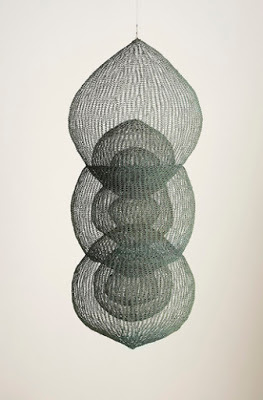 Ruth Asawa "Untitled [S.208, Hanging Three Interlocked Spheres, Each Containing Three Interlocked Spheres], ca. 1962
Ruth Asawa "Untitled [S.208, Hanging Three Interlocked Spheres, Each Containing Three Interlocked Spheres], ca. 1962 The one lasting gift from this exhibition is that I was introduced to new artists. Oddly enough, I didn’t know Asawa or Bontecou’s work at all. I was impressed with Bontecou’s timeless brutality - and two feet away, was Asawa’s profoundly beautifully textural hangings. Sculptures to me are about space, and how that space is filled. I would think first-hand, that it must be difficult to share space with Bontecou’s wall-hanging sculptures. Yet, the delicacy of Asawa, really made her work stand out as well as Bontecou, due to its contrasting aesthetic. In many ways, it’s Beauty and the Beast. Not set as a character, but as works in the same room. Which is set quite elegantly, due to the room’s architecture. Space issues also come to light with Eva Hesse’s work for the floor “Augment” and the hanging on the wall works “Aught.” The beauty of both pieces I don’t think can be photographed properly, due to the fading of the latex material, which seems to have a life of its own. For me, photography tends to fail in front of a sculpture or a work that is two or three-dimensional. I think it’s important that the viewer is actually there and either sharing or standing by that specific space of the artwork.
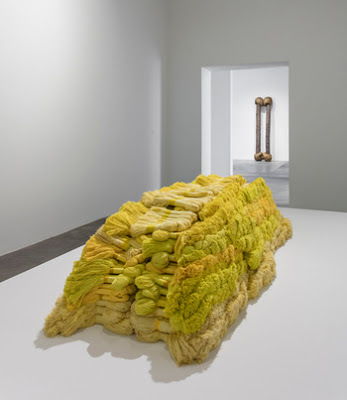 Sheila Hicks "Banisteriopsis" 1965-1966
Sheila Hicks "Banisteriopsis" 1965-1966I was also impressed with Sheila Hicks" "Banisteriopsis" which is made of linen and wool. In other words, yarn. I never heard of the word 'banisteriopsis' and later, I read up that it's a plant that grows in Central and South America. In the 1950s, she spent a great deal of time in that area of the world. There is something Peruvian or that part of the world regarding this specific piece. I think due to yarn. When I think yarn, I think Peru. No, I haven't the foggiest reason why. I find this the funniest work in the exhibition. For one, it's pleasing to the eye, but I tend to come to this room to visit the piece over and over again.
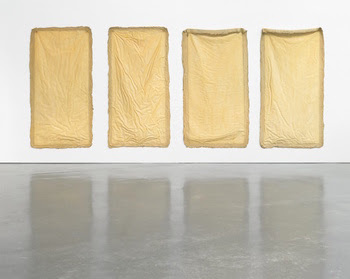 Eva Hesse "Aught" 1968
Eva Hesse "Aught" 1968The exhibition was co-curated by Paul Schimmel and Jenni Sorkin. One can always say 'why so-so is not in the show?" Nevertheless, they did an excellent job in making this exhibition work. For a more overall look of the show, here's the website:
http://www.hauserwirthschimmel.com/…/revolution-in-the-maki…
Published on September 08, 2016 08:29



